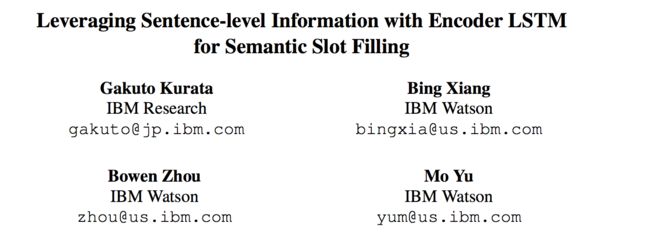- 《精雕细琢 Python 对象:深入理解 __slots__ 的性能魔法与实战应用》
《精雕细琢Python对象:深入理解slots的性能魔法与实战应用》引言:探索Python的对象管理机制在Python中,一切皆对象。然而,每一个对象背后都隐藏着复杂的运行机制。尤其在类设计中,我们往往忽略了对象属性的存储方式。今天,我们将深入剖析一个常被高级开发者使用的“利器”——__slots__,它能有效减少内存占用、提升性能,但也伴随着一些权衡和陷阱。本文旨在回答三个核心问题:__slot
- 编码标准汇总
追逐此刻
其他python
1.ASCII(AmericanStandardCodeforInformationInterchange)简介:最早的字符编码标准之一,由美国国家标准协会(ANSI)制定,主要用于英语字符。编码范围:7位编码(共128个字符),包括:控制字符(如换行、回车等)可打印字符(大写字母A-Z、小写字母a-z、数字0-9、标点符号等)缺点:仅支持英语,无法表示其他语言的字符(如中文、日文、阿拉伯文等)。
- 日常英语口语积累 | 第一轮
Ivy_IBFE
【口语练习资料】1.新闻编辑室(快)2.老友记3.摩登家庭4.CommencementspeechTips:1.readingandconsuminginformation2.nottomemorize3.nottoprematurelyapproachanativespeaker4.buildingyourinventoryofwordsandexpressions5.watchingTVors
- 在二分类任务中如何处理包含中文的类别特征
Dush32
分类数据挖掘人工智能机器学习数据分析
在机器学习中,处理类别特征(CategoricalFeatures)是常见的任务,特别是在中文数据中,很多类别特征如省份、城市等都是字符串类型。如何将这些类别变量转换为模型可以理解的数值格式,是每个数据科学家都必须面对的挑战。在这篇文章中,我们将探讨两种常见的类别特征编码方法:astype('category')和LabelEncoder,并比较它们在二分类任务中的效果。我们以“省份”这一类别特征
- 【AAAI2025】计算机视觉|P-sLSTM:P-sLSTM:让LSTM在时间序列预测领域“重获新生”
论文地址:https://arxiv.org/pdf/2408.10006代码地址:https://github.com/Eleanorkong/P-sLSTM关注UPCV缝合怪,分享最计算机视觉新即插即用模块,并提供配套的论文资料与代码。https://space.bilibili.com/473764881摘要传统的循环神经网络结构,如长短期记忆神经网络(LSTM),在时间序列预测(TSF)任
- 【转】【译】How to Handle Very Long Sequences with LSTM(LSTM RNN 超长序列处理)
开始奋斗的胖子
机器学习RNNLSTM序列深度学习
原文地址http://machinelearningmastery.com/handle-long-sequences-long-short-term-memory-recurrent-neural-networks/一个长的输入序列却只对应一个或者一小段输出就是我们经常说的序列标注和序列分类。主要包括下面一些例子:包含上千个词的文件情感分类(NLP)包含上千个时间状态的脑电痕迹分类(Medici
- 使用QMetaObject::invokeMethod将槽函数移动到其他线程执行
飞天_
qt
classObjTest:publicQObject{Q_OBJECTpublic:voidFunTest(){qDebug()thread()->currentThread();QMetaObject::invokeMethod(this,"slotTest",Qt::AutoConnection);}publicslots:voidslotTest(){qDebug()thread()->cu
- 基于蜣螂算法优化多头注意力机制的卷积神经网络结合双向长短记忆神经网络实现温度预测DBO-CNN-biLSTM-Multihead-Attention附matlab代码
matlab科研助手
神经网络算法cnn
✅作者简介:热爱科研的Matlab仿真开发者,修心和技术同步精进,代码获取、论文复现及科研仿真合作可私信。个人主页:Matlab科研工作室个人信条:格物致知。更多Matlab完整代码及仿真定制内容点击智能优化算法神经网络预测雷达通信无线传感器电力系统信号处理图像处理路径规划元胞自动机无人机物理应用机器学习内容介绍温度预测在气象学、农业、能源等领域具有重要的应用价值。随着大数据和人工智能技术的快速发
- Datawhale组队学习打卡-Fun-transformer-Task3Encoder
宇宙第一小甜欣
学习transformer深度学习
今天的内容主要是Encoder部分的具体流程,多头注意力和交叉注意力,还是会有比较多的公式来厘清每部分的输入和输出以及对应的方法。Encoder如第一篇所说,Encoder是Transformer的第一部分,其主要任务是将输入序列(如文本、词语或字符)编码为一个上下文丰富的表示,Encoder的输出是Decoder的输入的一部分(用作Attention机制中的和)。1.Encoder的整体结构堆叠
- 2020-12-09
幸福大黑鸭
IT1.LeetCode:汇总区间Java编写2020-12-09(228.汇总区间)2.《Java从入门到精通》明日科技:P351~355阅读记xmind笔记,并自己实现实例。知识点之前确实都学过,但还是再系统复习一下吧。3.《Semantic-awareWorkflowConstructionandAnalysisforDistributedDataAnalyticsSystems》:粗读关键
- Flink 流处理的核心基石【时间语义、水位线、状态、检查点、反压 】
csdn_tom_168
大数据flink核心时间语义水位线状态检查点反压
Flink流处理的核心基石【时间语义、水位线、状态、检查点、反压】,这些概念相互协作,构建了Flink高吞吐、低延迟、高容错的实时计算能力。以下是这些核心技术的深度解析及其内在联系:一、五大基石的内在联系驱动触发计算持久化保护恢复时间语义水位线状态管理检查点反压二、核心组件深度解析1.时间语义(TimeSemantics)核心作用:定义事件的时间维度//设置事件时间语义(关键配置)env.setS
- 【vLLM 学习】Encoder Decoder Multimodal
HyperAI超神经
vLLMvLLMKV缓存大语言模型推理加速内存管理开源项目在线教程
vLLM是一款专为大语言模型推理加速而设计的框架,实现了KV缓存内存几乎零浪费,解决了内存管理瓶颈问题。更多vLLM中文文档及教程可访问→https://vllm.hyper.ai/*在线运行vLLM入门教程:零基础分步指南源码examples/offline_inference/encoder_decoder_multimodal.py#SPDX-License-Identifier:Apach
- 后仿之debug记录
风之子npu
后仿单片机嵌入式硬件
在此记录一下在实际工作中碰到的在后仿过程中碰见的一些问题:1.数据采样失败原因1:iodelay增加不足;解决办法:根据sdc修正iodelay数值,同时参考后端PR的timingreport,修正delay;原因2:glitch导致采样失败,zerodelay期间,虽然在波形中看到信号变化时瞬时的,但是同一个timingslot中因为器件自身的原因,导致信号在同一个timingslot中其实变化
- Python 日期格式转json.dumps的解决方法
douyaoxin
pythonjson开发语言
classDateEncoder(json.JSONEncoder):defdefault(self,obj):ifisinstance(obj,datetime.datetime):returnobj.strftime('%Y-%m-%d%H:%M:%S')elifisinstance(obj,datetime.date):returnobj.strftime("%Y-%m-%d")json.d
- 24GB GPU 中的 DeepSeek R1:Unsloth AI 针对 671B 参数模型进行动态量化
知识大胖
NVIDIAGPU和大语言模型开发教程人工智能deepseekollama
简介最初的DeepSeekR1是一个拥有6710亿个参数的语言模型,UnslothAI团队对其进行了动态量化,将模型大小减少了80%(从720GB减少到131GB),同时保持了强大的性能。当添加模型卸载功能时,该模型可以在24GBVRAM下以低令牌/秒的推理速度运行。推荐文章《本地构建AI智能分析助手之01快速安装,使用PandasAI和Ollama进行数据分析,用自然语言向你公司的数据提问为决策
- 在 Obsidian 中本地使用 DeepSeek — 无需互联网!
知识大胖
NVIDIAGPU和大语言模型开发教程人工智能deepseek
简介您是否想在Obsidian内免费使用类似于ChatGPT的本地LLM?如果是,那么本指南适合您!我将引导您完成在Obsidian中安装和使用DeepSeek-R1模型的确切步骤,这样您就可以在笔记中拥有一个由AI驱动的第二大脑。推荐文章《24GBGPU中的DeepSeekR1:UnslothAI针对671B参数模型进行动态量化》权重1,DeepSeek类《在RaspberryPi上运行语音识别
- Docker初识:mysql8主从复制(单向)- 主从搭建扩展知识
滴水可藏海
#mysql数据库
主从服务(master-slave)新学习到的知识。1、全库同步与部分同步上回书说到Docker初识:mysql8主从复制(单向)的配置都是针对全库配置的。但是实际上并不需要针对全库做备份,只需要对一些特别重要的库或者表来进行同步。例如information_schema等。可以通过配置文件中的一些属性指定需要针对哪些库或者哪些表记录binlog。Master配置:#需要同步的二进制数据库名bin
- 【AI大模型】LLM模型架构深度解析:BERT vs. GPT vs. T5
我爱一条柴ya
学习AI记录ai人工智能AI编程python
引言Transformer架构的诞生(Vaswanietal.,2017)彻底改变了自然语言处理(NLP)。在其基础上,BERT、GPT和T5分别代表了三种不同的模型范式,主导了预训练语言模型的演进。理解它们的差异是LLM开发和学习的基石。一、核心架构对比特性BERT(BidirectionalEncoder)GPT(GenerativePre-trainedTransformer)T5(Text
- 5G标准学习笔记14 - CSI--RS概述
刘孬孬沉迷学习
5G学习笔记信息与通信
5G标准学习笔记14-CSI–RS概述大家好~,这里是刘孬孬,今天带着大家一起学习一下5GNR中一个非常非常重要的参考信号------------------CSI-RS信号,CSI-RS不是持续发送,UE只能在网络明确配置了CSI-RS的情况下才能使用其进行信道测量。前言对于CSI-RS,肯定还离不开前面所说的CSI(channelstateinformation),前面也讲过CSI对于MIMO
- Kafka如何做到消息不丢失
野老杂谈
全网最全IT公司面试宝典kafka分布式
一、三种消息传递语义(MessageDeliverySemantics):核心是“消息被消费处理的次数”Kafka的三种传递语义本质上描述的是“一条消息从生产到最终被消费者处理完成,可能出现的次数”,这由生产者的消息写入可靠性和消费者的offset提交策略共同决定。1.Atmostonce(最多一次)定义:消息可能丢失,但绝不会被重复处理。触发场景:消费者先提交offset,再处理消息。流程:消费
- android Input子系统分析(内核层->android系统层)
InputTechnicalInformationAndroid输入子系统支持许多不同的设备类,包括键盘,摇杆,轨迹球,鼠标和触摸屏.这份文档描述了上层如何配置,校准,测试,和编写输入设备驱动.InputConceptsOverviewKeyLayoutFilesKeyCharacterMapFilesInputDeviceConfigurationFilesMigrationGuideInput
- Vue3 + TS + Element-Plus 封装的 Table 表格组件
阳光的男夹克
Vue3vue.jselementuijavascript
代码中主要增加了3个插槽,operationsStart从操作栏开头增加按钮,operationsStart从操作栏结尾增加按钮,还有一个插槽用来自定义列的内容,就是TableModel里面的Key{{row[tableModel.key]}}<slotname="operationsStart"v-bind=
- Building Apps with AI Tools: ChatGPT, Semantic Kernel, and Langchain 项目推荐
滕娴殉
BuildingAppswithAITools:ChatGPT,SemanticKernel,andLangchain项目推荐building-apps-with-ai-tools-chatgpt-semantic-kernel-langchain-4469616ThisisacoderepositoryfortheLinkedInLearningcourseBuildingAppswithAIT
- android 无线调试_Android 11的无线调试
weixin_26739079
androiddebugpython安卓
android无线调试Android11developerpreviewhaslotsofnewfeaturestolookbutoneofthecoolestisWirelessdebugging.ItisanewmethodfordeveloperstopairtheirAndroiddeviceswithacomputerwirelessly.Beforewedivemoreintothis
- Semantic text 就是那么强大,还附带一包( BBQ )薯片!配有可配置的分块设置和索引选项。
Elastic 中国社区官方博客
ElasticsearchAI大数据elasticsearch搜索引擎全文检索人工智能ai图搜索
作者:来自ElasticKathleenDeRusso语义文本搜索现在可以自定义,支持可配置的分块设置和索引选项,用于自定义向量量化,使semantic_text在专业用例中更强大。Elasticsearch拥有大量新功能,帮助你为你的用例构建最佳搜索解决方案。深入查看我们的示例笔记本以了解更多信息,开始免费云试用,或者立即在本地机器上体验Elastic。随着Elasticsearch8.18和9
- lstm 输入数据维度_[mcj]pytorch中LSTM的输入输出解释||LSTM输入输出详解
萬重
lstm输入数据维度
最近想了解一些关于LSTM的相关知识,在进行代码测试的时候,有个地方一直比较疑惑,关于LSTM的输入和输出问题。一直不清楚在pytorch里面该如何定义LSTM的输入和输出。首先看个pytorch官方的例子:#首先导入LSTM需要的相关模块importtorchimporttorch.nnasnn#神经网络模块#数据向量维数10,隐藏元维度20,2个LSTM层串联(如果是1,可以省略,默认为1)r
- lstm 输入数据维度_keras中关于输入尺寸、LSTM的stateful问题
weixin_39856269
lstm输入数据维度
补充:return_sequence,return_state都是针对一个时间切片(步长)内的h和c状态,而stateful是针对不同的batch之间的。多层LSTM需要设置return_sequence=True,后面再设置return_sequence=False.最近在学习使用keras搭建LSTM的时候,遇到了一些不明白的地方。有些搞懂了,有些还没有搞懂。现在记下来,因为很快就会忘记!-_
- lstm 数据输入问题
AI算法网奇
python基础lstm人工智能
lstm我有20*6条数据,20个样本,每个样本6条历史数据,每条数据有5个值,我送给网络输入时应该是20*6*5还是6*20*5你的数据是:20个样本(batchsize=20)每个样本有6条历史数据(sequencelength=6)每条数据有5个值(inputsize=5)✅正确的输入形状是:(20,6,5)#即batch_size=20,seq_len=6,input_size=5前提是你
- 量化价值投资中的深度学习技术:TensorFlow实战
量化价值投资中的深度学习技术:TensorFlow实战关键词:量化价值投资,深度学习,TensorFlow,股票预测,因子模型,LSTM神经网络,量化策略摘要:本文将带你走进"量化价值投资"与"深度学习"的交叉地带,用小学生都能听懂的语言解释复杂概念,再通过手把手的TensorFlow实战案例,教你如何用AI技术挖掘股票市场中的价值宝藏。我们会从传统价值投资的痛点出发,揭示深度学习如何像"超级分析
- 视频讲解:ARIMA-LSTM注意力融合模型跨行业股价预测应用
全文链接:https://tecdat.cn/?p=42866原文出处:拓端数据部落公众号分析师:ChengchengLi在协助券商构建股价预测系统时,团队曾面临高频波动市场的建模困境。传统ARIMA模型对极端行情响应迟滞,单一LSTM模型则存在长期依赖难题。基于该项目实践,我们提出ARIMA-LSTM注意力融合框架,通过双轨协同机制实现预测精度突破。视频讲解:ARIMA-LSTM注意力融合模型跨
- apache 安装linux windows
墙头上一根草
apacheinuxwindows
linux安装Apache 有两种方式一种是手动安装通过二进制的文件进行安装,另外一种就是通过yum 安装,此中安装方式,需要物理机联网。以下分别介绍两种的安装方式
通过二进制文件安装Apache需要的软件有apr,apr-util,pcre
1,安装 apr 下载地址:htt
- fill_parent、wrap_content和match_parent的区别
Cb123456
match_parentfill_parent
fill_parent、wrap_content和match_parent的区别:
1)fill_parent
设置一个构件的布局为fill_parent将强制性地使构件扩展,以填充布局单元内尽可能多的空间。这跟Windows控件的dockstyle属性大体一致。设置一个顶部布局或控件为fill_parent将强制性让它布满整个屏幕。
2) wrap_conte
- 网页自适应设计
天子之骄
htmlcss响应式设计页面自适应
网页自适应设计
网页对浏览器窗口的自适应支持变得越来越重要了。自适应响应设计更是异常火爆。再加上移动端的崛起,更是如日中天。以前为了适应不同屏幕分布率和浏览器窗口的扩大和缩小,需要设计几套css样式,用js脚本判断窗口大小,选择加载。结构臃肿,加载负担较大。现笔者经过一定时间的学习,有所心得,故分享于此,加强交流,共同进步。同时希望对大家有所
- [sql server] 分组取最大最小常用sql
一炮送你回车库
SQL Server
--分组取最大最小常用sql--测试环境if OBJECT_ID('tb') is not null drop table tb;gocreate table tb( col1 int, col2 int, Fcount int)insert into tbselect 11,20,1 union allselect 11,22,1 union allselect 1
- ImageIO写图片输出到硬盘
3213213333332132
javaimage
package awt;
import java.awt.Color;
import java.awt.Font;
import java.awt.Graphics;
import java.awt.image.BufferedImage;
import java.io.File;
import java.io.IOException;
import javax.imagei
- 自己的String动态数组
宝剑锋梅花香
java动态数组数组
数组还是好说,学过一两门编程语言的就知道,需要注意的是数组声明时需要把大小给它定下来,比如声明一个字符串类型的数组:String str[]=new String[10]; 但是问题就来了,每次都是大小确定的数组,我需要数组大小不固定随时变化怎么办呢? 动态数组就这样应运而生,龙哥给我们讲的是自己用代码写动态数组,并非用的ArrayList 看看字符
- pinyin4j工具类
darkranger
.net
pinyin4j工具类Java工具类 2010-04-24 00:47:00 阅读69 评论0 字号:大中小
引入pinyin4j-2.5.0.jar包:
pinyin4j是一个功能强悍的汉语拼音工具包,主要是从汉语获取各种格式和需求的拼音,功能强悍,下面看看如何使用pinyin4j。
本人以前用AscII编码提取工具,效果不理想,现在用pinyin4j简单实现了一个。功能还不是很完美,
- StarUML学习笔记----基本概念
aijuans
UML建模
介绍StarUML的基本概念,这些都是有效运用StarUML?所需要的。包括对模型、视图、图、项目、单元、方法、框架、模型块及其差异以及UML轮廓。
模型、视与图(Model, View and Diagram)
&
- Activiti最终总结
avords
Activiti id 工作流
1、流程定义ID:ProcessDefinitionId,当定义一个流程就会产生。
2、流程实例ID:ProcessInstanceId,当开始一个具体的流程时就会产生,也就是不同的流程实例ID可能有相同的流程定义ID。
3、TaskId,每一个userTask都会有一个Id这个是存在于流程实例上的。
4、TaskDefinitionKey和(ActivityImpl activityId
- 从省市区多重级联想到的,react和jquery的差别
bee1314
jqueryUIreact
在我们的前端项目里经常会用到级联的select,比如省市区这样。通常这种级联大多是动态的。比如先加载了省,点击省加载市,点击市加载区。然后数据通常ajax返回。如果没有数据则说明到了叶子节点。 针对这种场景,如果我们使用jquery来实现,要考虑很多的问题,数据部分,以及大量的dom操作。比如这个页面上显示了某个区,这时候我切换省,要把市重新初始化数据,然后区域的部分要从页面
- Eclipse快捷键大全
bijian1013
javaeclipse快捷键
Ctrl+1 快速修复(最经典的快捷键,就不用多说了)Ctrl+D: 删除当前行 Ctrl+Alt+↓ 复制当前行到下一行(复制增加)Ctrl+Alt+↑ 复制当前行到上一行(复制增加)Alt+↓ 当前行和下面一行交互位置(特别实用,可以省去先剪切,再粘贴了)Alt+↑ 当前行和上面一行交互位置(同上)Alt+← 前一个编辑的页面Alt+→ 下一个编辑的页面(当然是针对上面那条来说了)Alt+En
- js 笔记 函数
征客丶
JavaScript
一、函数的使用
1.1、定义函数变量
var vName = funcation(params){
}
1.2、函数的调用
函数变量的调用: vName(params);
函数定义时自发调用:(function(params){})(params);
1.3、函数中变量赋值
var a = 'a';
var ff
- 【Scala四】分析Spark源代码总结的Scala语法二
bit1129
scala
1. Some操作
在下面的代码中,使用了Some操作:if (self.partitioner == Some(partitioner)),那么Some(partitioner)表示什么含义?首先partitioner是方法combineByKey传入的变量,
Some的文档说明:
/** Class `Some[A]` represents existin
- java 匿名内部类
BlueSkator
java匿名内部类
组合优先于继承
Java的匿名类,就是提供了一个快捷方便的手段,令继承关系可以方便地变成组合关系
继承只有一个时候才能用,当你要求子类的实例可以替代父类实例的位置时才可以用继承。
在Java中内部类主要分为成员内部类、局部内部类、匿名内部类、静态内部类。
内部类不是很好理解,但说白了其实也就是一个类中还包含着另外一个类如同一个人是由大脑、肢体、器官等身体结果组成,而内部类相
- 盗版win装在MAC有害发热,苹果的东西不值得买,win应该不用
ljy325
游戏applewindowsXPOS
Mac mini 型号: MC270CH-A RMB:5,688
Apple 对windows的产品支持不好,有以下问题:
1.装完了xp,发现机身很热虽然没有运行任何程序!貌似显卡跑游戏发热一样,按照那样的发热量,那部机子损耗很大,使用寿命受到严重的影响!
2.反观安装了Mac os的展示机,发热量很小,运行了1天温度也没有那么高
&nbs
- 读《研磨设计模式》-代码笔记-生成器模式-Builder
bylijinnan
java设计模式
声明: 本文只为方便我个人查阅和理解,详细的分析以及源代码请移步 原作者的博客http://chjavach.iteye.com/
/**
* 生成器模式的意图在于将一个复杂的构建与其表示相分离,使得同样的构建过程可以创建不同的表示(GoF)
* 个人理解:
* 构建一个复杂的对象,对于创建者(Builder)来说,一是要有数据来源(rawData),二是要返回构
- JIRA与SVN插件安装
chenyu19891124
SVNjira
JIRA安装好后提交代码并要显示在JIRA上,这得需要用SVN的插件才能看见开发人员提交的代码。
1.下载svn与jira插件安装包,解压后在安装包(atlassian-jira-subversion-plugin-0.10.1)
2.解压出来的包里下的lib文件夹下的jar拷贝到(C:\Program Files\Atlassian\JIRA 4.3.4\atlassian-jira\WEB
- 常用数学思想方法
comsci
工作
对于搞工程和技术的朋友来讲,在工作中常常遇到一些实际问题,而采用常规的思维方式无法很好的解决这些问题,那么这个时候我们就需要用数学语言和数学工具,而使用数学工具的前提却是用数学思想的方法来描述问题。。下面转帖几种常用的数学思想方法,仅供学习和参考
函数思想
把某一数学问题用函数表示出来,并且利用函数探究这个问题的一般规律。这是最基本、最常用的数学方法
- pl/sql集合类型
daizj
oracle集合typepl/sql
--集合类型
/*
单行单列的数据,使用标量变量
单行多列数据,使用记录
单列多行数据,使用集合(。。。)
*集合:类似于数组也就是。pl/sql集合类型包括索引表(pl/sql table)、嵌套表(Nested Table)、变长数组(VARRAY)等
*/
/*
--集合方法
&n
- [Ofbiz]ofbiz初用
dinguangx
电商ofbiz
从github下载最新的ofbiz(截止2015-7-13),从源码进行ofbiz的试用
1. 加载测试库
ofbiz内置derby,通过下面的命令初始化测试库
./ant load-demo (与load-seed有一些区别)
2. 启动内置tomcat
./ant start
或
./startofbiz.sh
或
java -jar ofbiz.jar
&
- 结构体中最后一个元素是长度为0的数组
dcj3sjt126com
cgcc
在Linux源代码中,有很多的结构体最后都定义了一个元素个数为0个的数组,如/usr/include/linux/if_pppox.h中有这样一个结构体: struct pppoe_tag { __u16 tag_type; __u16 tag_len; &n
- Linux cp 实现强行覆盖
dcj3sjt126com
linux
发现在Fedora 10 /ubutun 里面用cp -fr src dest,即使加了-f也是不能强行覆盖的,这时怎么回事的呢?一两个文件还好说,就输几个yes吧,但是要是n多文件怎么办,那还不输死人呢?下面提供三种解决办法。 方法一
我们输入alias命令,看看系统给cp起了一个什么别名。
[root@localhost ~]# aliasalias cp=’cp -i’a
- Memcached(一)、HelloWorld
frank1234
memcached
一、简介
高性能的架构离不开缓存,分布式缓存中的佼佼者当属memcached,它通过客户端将不同的key hash到不同的memcached服务器中,而获取的时候也到相同的服务器中获取,由于不需要做集群同步,也就省去了集群间同步的开销和延迟,所以它相对于ehcache等缓存来说能更好的支持分布式应用,具有更强的横向伸缩能力。
二、客户端
选择一个memcached客户端,我这里用的是memc
- Search in Rotated Sorted Array II
hcx2013
search
Follow up for "Search in Rotated Sorted Array":What if duplicates are allowed?
Would this affect the run-time complexity? How and why?
Write a function to determine if a given ta
- Spring4新特性——更好的Java泛型操作API
jinnianshilongnian
spring4generic type
Spring4新特性——泛型限定式依赖注入
Spring4新特性——核心容器的其他改进
Spring4新特性——Web开发的增强
Spring4新特性——集成Bean Validation 1.1(JSR-349)到SpringMVC
Spring4新特性——Groovy Bean定义DSL
Spring4新特性——更好的Java泛型操作API
Spring4新
- CentOS安装JDK
liuxingguome
centos
1、行卸载原来的:
[root@localhost opt]# rpm -qa | grep java
tzdata-java-2014g-1.el6.noarch
java-1.7.0-openjdk-1.7.0.65-2.5.1.2.el6_5.x86_64
java-1.6.0-openjdk-1.6.0.0-11.1.13.4.el6.x86_64
[root@localhost
- 二分搜索专题2-在有序二维数组中搜索一个元素
OpenMind
二维数组算法二分搜索
1,设二维数组p的每行每列都按照下标递增的顺序递增。
用数学语言描述如下:p满足
(1),对任意的x1,x2,y,如果x1<x2,则p(x1,y)<p(x2,y);
(2),对任意的x,y1,y2, 如果y1<y2,则p(x,y1)<p(x,y2);
2,问题:
给定满足1的数组p和一个整数k,求是否存在x0,y0使得p(x0,y0)=k?
3,算法分析:
(
- java 随机数 Math与Random
SaraWon
javaMathRandom
今天需要在程序中产生随机数,知道有两种方法可以使用,但是使用Math和Random的区别还不是特别清楚,看到一篇文章是关于的,觉得写的还挺不错的,原文地址是
http://www.oschina.net/question/157182_45274?sort=default&p=1#answers
产生1到10之间的随机数的两种实现方式:
//Math
Math.roun
- oracle创建表空间
tugn
oracle
create temporary tablespace TXSJ_TEMP
tempfile 'E:\Oracle\oradata\TXSJ_TEMP.dbf'
size 32m
autoextend on
next 32m maxsize 2048m
extent m
- 使用Java8实现自己的个性化搜索引擎
yangshangchuan
javasuperword搜索引擎java8全文检索
需要对249本软件著作实现句子级别全文检索,这些著作均为PDF文件,不使用现有的框架如lucene,自己实现的方法如下:
1、从PDF文件中提取文本,这里的重点是如何最大可能地还原文本。提取之后的文本,一个句子一行保存为文本文件。
2、将所有文本文件合并为一个单一的文本文件,这样,每一个句子就有一个唯一行号。
3、对每一行文本进行分词,建立倒排表,倒排表的格式为:词=包含该词的总行数N=行号

